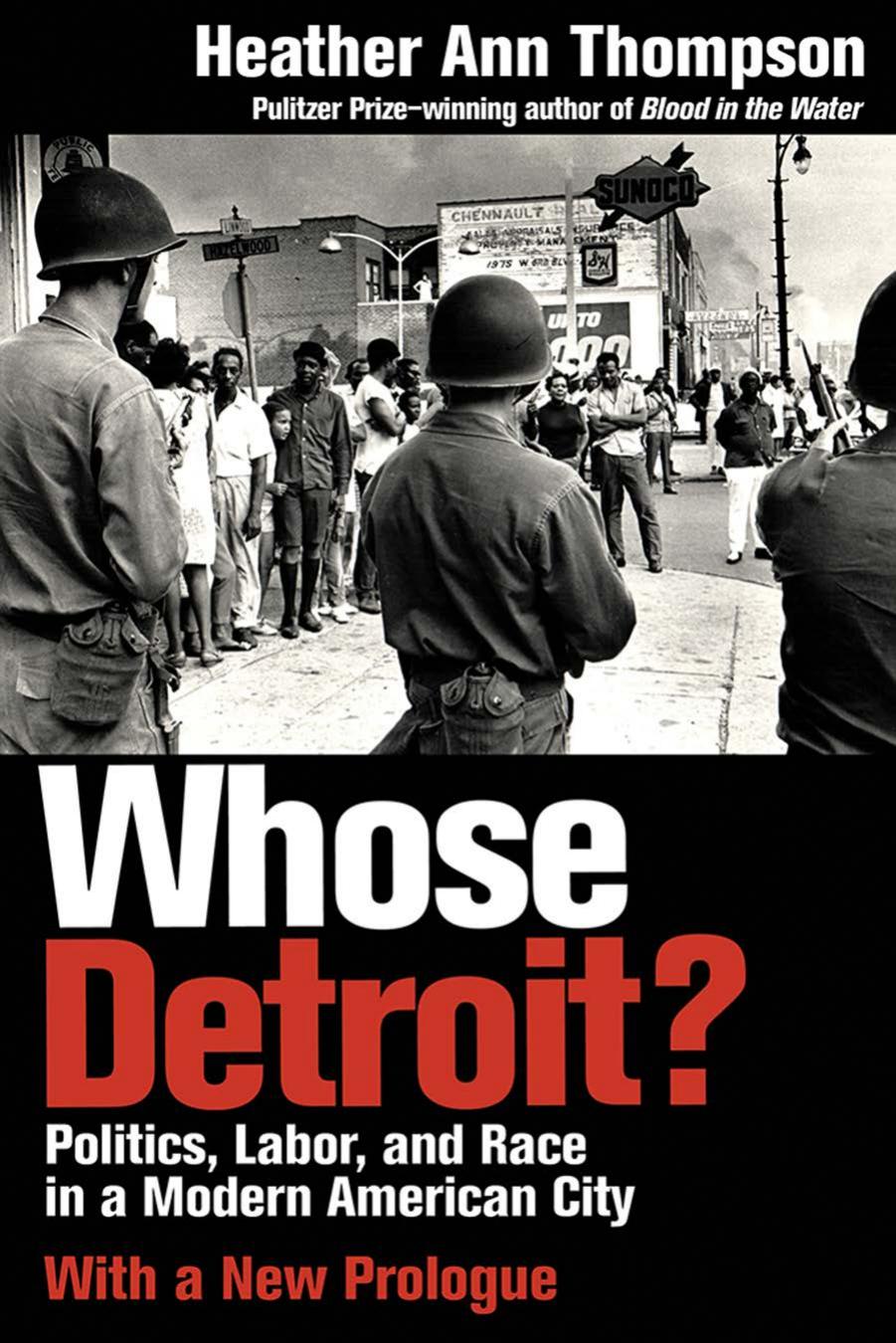Whose Detroit? by Heather Ann Thompson

Author:Heather Ann Thompson [Thompson, Heather Ann]
Language: eng
Format: epub, pdf
Tags: Social Science, Sociology, Urban, History, United States, State & Local, Midwest (IA; IL; IN; KS; MI; MN; MO; ND; NE; OH; SD; WI), Political Science, Labor & Industrial Relations
ISBN: 9781501709227
Google: p_skDwAAQBAJ
Publisher: Cornell University Press
Published: 2017-04-01T03:34:11+00:00
Kenneth V. Cockrel speaking at the March 26, 1972, anti-STRESS rally. Walter P. Reuther Library, Wayne State University.
The implications of this turn of events were vast. Radicals such as Ken Cockrel experienced a real set-back when, after four days of graphic testimony, Judge OâHair decided he need not render an emergency decision, and thus the case was destined for the regular docket, where it could languish for years. And liberals also felt defeated by OâHairâs ruling because it thwarted their attempt to prove that the legal system would indeed resolve thorny social problems in expeditious fashion. But while the de facto victors in the anti-STRESS suitâwhite conservatives and the Gribbs administrationâshould have been elated, they were still uneasy. To them, as long as blacks or liberalsâor, worse yet, black liberalsâwere on the bench in the Motor City, their interests were not secure. Only fueling this fear, a biracial group called the Labor Defense Coalition, the first-listed plaintiff in the anti-STRESS suit Cockrel, vowed that the citizens of Detroit âwill not wait two years for âjustice.ââ86 Indeed, city radicals did not have to wait hardly any time at all to reseek âjusticeâ in their campaign against STRESS. Despite the number of reforms that Mayor Gribbs had insisted on after the debacle on Rochester Street,87 an event transpired on December 4, 1972, between four STRESS officers and three young black men that once again brought this police unit into the media spotlight and once again allowed Cockrel a chance to challenge STRESS in court.
Because Mayor Gribbsâs new reforms were intended to make STRESS more efficient and organized and did not eliminate its undercover features, black fear of the police only escalated after 1971.88 Well aware of this fear, a local newspaper The Community Reporter took the time in 1972 to inform black Detroiters about âwhat to do in the case of STRESS.â89 But the problem with such advice was that in every STRESS maneuver that ended in a citizen death, the victim did not know that he or she was being accosted or questioned by a member of law enforcement, as STRESS officers were always dressed as hippies or street people. And because STRESS patrolled areas already full of hippies and street people, ordinary citizens had no reason to believe that a strange individual approaching them was anything other than he or she appeared to be.
One such neighborhood, which not only was filled with the eclectic and the down and out but also with an active drug trade, was home to three young black men: Hayward Brown, Marcus Clyde Bethune, and John Percy Boyd. Brown was an eighteen-year-old who had joined the Sons of Malcolm X in the twelfth grade. Brownâs first cousin, Boyd, was a student at Wayne State University who worked with underprivileged kids at the Detroit Department of Parks and Recreation. Bethune was also a college student at WSU.90
By his senior year of high school, Brown had become deeply influenced by Malcolm Xâs position that young black men had to be free of drugs in order to fight most effectively for black liberation.
Download
This site does not store any files on its server. We only index and link to content provided by other sites. Please contact the content providers to delete copyright contents if any and email us, we'll remove relevant links or contents immediately.
A Cultural History of Work in the Age of Empire by Victoria E. Thompson (ed.)(289)
A Rome of One's Own by Emma Southon(274)
Executive Order No. 9066: The Terrible Injustice Of 1942 by Sollace Freeman(268)
The Evidence of Things Not Seen by James Baldwin(265)
The Explorers by Amanda Bellows(244)
Respectability and Reform by Tara M. McCarthy(240)
A Wider Type of Freedom: How Struggles for Racial Justice Liberate Everyone by Daniel Martinez HoSang(217)
The Grey Eagles of Chippewa Falls by John E. Kinville(189)
Liberty's Dawn: A People's History of the Industrial Revolution by Emma Griffin(188)
Rethinking White Societies in Southern Africa by Duncan Money(187)
Letters From London by Julian Barnes(182)
The Crosswinds of Freedom by James MacGregor Burns(179)
A Troublemaker May Surprise (The Troublemaker Series Book 2) by Genta Sebastian(171)
Evolution of Slavery Through the Ages: A Comprehensive World History of Slavery by PRESS VERITY(165)
Continental Strangers by Gemunden Gerd;(159)
A Teacher's Guide to Ladies of Liberty by Cokie Roberts Amy Jurskis(155)
The Slave Ship, Memory and the Origin of Modernity by Martyn Hudson(149)
Beware the Masher by Kerry Segrave(140)
Hunger Dark Pen by Dark Pen(137)
